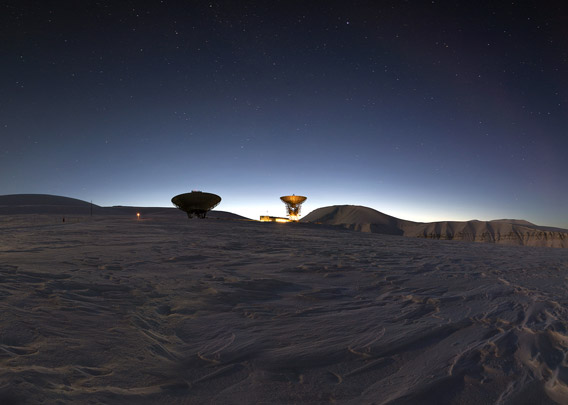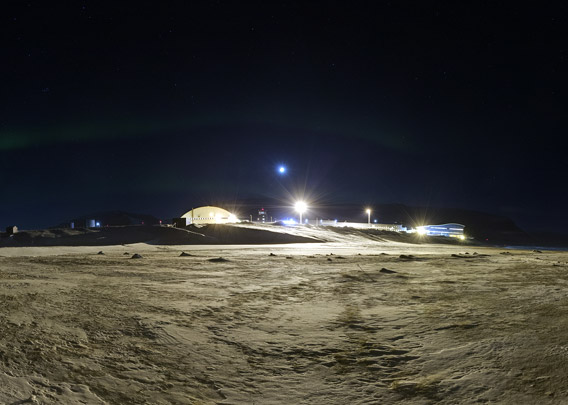-
current
recommendations- Liefdefjord
New page dedicated to one of Spitsbergen's most beautiful fjords. Background information and many photos.
- New Spitsbergen guidebook
The new edition of my Spitsbergen guidebook is out and available now!
- Liefdefjord
New page dedicated to one of Spitsbergen's most beautiful fjords. Background information and many photos.
Page Structure
-
Spitsbergen-News
- Select Month
- June 2025
- May 2025
- April 2025
- March 2025
- February 2025
- January 2025
- December 2024
- November 2024
- October 2024
- September 2024
- August 2024
- July 2024
- June 2024
- May 2024
- April 2024
- March 2024
- February 2024
- January 2024
- December 2023
- November 2023
- October 2023
- September 2023
- August 2023
- July 2023
- June 2023
- May 2023
- April 2023
- March 2023
- February 2023
- January 2023
- December 2022
- November 2022
- October 2022
- September 2022
- August 2022
- July 2022
- June 2022
- May 2022
- April 2022
- March 2022
- February 2022
- January 2022
- December 2021
- November 2021
- October 2021
- September 2021
- August 2021
- July 2021
- June 2021
- May 2021
- April 2021
- March 2021
- February 2021
- January 2021
- December 2020
- November 2020
- October 2020
- September 2020
- August 2020
- July 2020
- June 2020
- May 2020
- April 2020
- March 2020
- February 2020
- January 2020
- December 2019
- November 2019
- October 2019
- September 2019
- August 2019
- July 2019
- June 2019
- May 2019
- April 2019
- March 2019
- February 2019
- January 2019
- December 2018
- November 2018
- October 2018
- September 2018
- August 2018
- July 2018
- June 2018
- May 2018
- April 2018
- March 2018
- February 2018
- January 2018
- December 2017
- November 2017
- October 2017
- September 2017
- August 2017
- July 2017
- June 2017
- May 2017
- April 2017
- March 2017
- February 2017
- January 2017
- December 2016
- November 2016
- October 2016
- September 2016
- August 2016
- July 2016
- June 2016
- May 2016
- April 2016
- March 2016
- February 2016
- January 2016
- December 2015
- November 2015
- October 2015
- September 2015
- August 2015
- July 2015
- June 2015
- May 2015
- April 2015
- March 2015
- February 2015
- January 2015
- December 2014
- November 2014
- October 2014
- September 2014
- August 2014
- July 2014
- June 2014
- May 2014
- April 2014
- March 2014
- February 2014
- January 2014
- December 2013
- November 2013
- October 2013
- September 2013
- August 2013
- July 2013
- June 2013
- May 2013
- April 2013
- March 2013
- February 2013
- January 2013
- December 2012
- November 2012
- October 2012
- September 2012
- August 2012
- July 2012
- June 2012
- May 2012
- April 2012
- March 2012
- February 2012
- January 2012
- December 2011
- November 2011
- October 2011
- September 2011
- August 2011
- May 2011
- April 2011
- March 2011
- February 2011
- January 2011
- December 2010
- November 2010
- September 2010
- August 2010
- July 2010
- June 2010
- May 2010
- April 2010
- March 2010
- February 2010
- November 2009
- October 2009
- August 2009
- July 2009
- June 2009
- May 2009
- April 2009
- March 2009
- February 2009
- January 2009
- December 2008
- November 2008
- October 2008
- August 2008
- July 2008
- June 2008
- May 2008
- April 2008
- March 2008
- February 2008
- April 2000
- Select Month
-
weather information
-
Newsletter

| Guidebook: Spitsbergen-Svalbard |
Home
→ Spitsbergen information
→ Northern light
Northern light
Northern light, polar light, Aurora borealis – whatever you want to call it, it is always a magical experience to see it on the dark night sky in high latitudes. In the southern hemisphere, the southern light is of course the Aurora australis, not borealis. The magic of the aurora has always fascinated people: they used to consider them a bad omen in the past, messengers of war and disaster, a sign of ancient Gods or dancing souls of deceased ancestors. Today we know the aurora is just physics, but it is still a touching experience, just as it was in the past. Today, tourists and photographers are travelling around the globe to see it.
360 degree panorama: night sky with aurora borealis near mine 7
- pano anchor link: #Longyearbyen_07Jan14_039
But it is a matter of being at the right place at the right time. The assumption the closer to the geographical pole the better is wrong. The magnetic field of the earth is not orientated towards the geographical pole (90 degrees latitude, the axis of the earth), but towards the magnetic poles, which are many hundred miles away from their geographical counterparts. But even that is not quite right. The earth’s magnetic field is, in fact, quite a chaotic thing. It is always disturbed by local anomalies, which are abundant.
The magnetic field catches the solar wind: electrically charged particles that are ejected by the sun into space. These particles are guided by the magnetic field lines and thus enter the higher atmosphere of the earth’s polar areas. There, they hit atmospheric gas molecules and stimulate them to emit light at a defined wavelength, which translates as a given colour. This is what we see as polar light. The process happens in the stratosphere, between 20 and 30 km in height. There are several colour options, green is the most common one, followed by red.
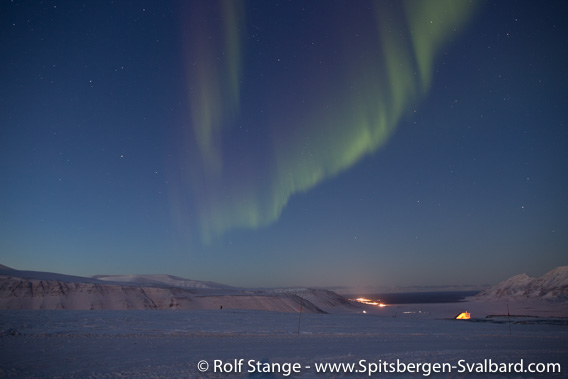
Polar night and a relatively weak northern light in Adventdalen, Longyearbyen in the distance. 24 mm, 10 sec. exposure time, f 3.2, ISO 800.
Because of the spatial structure of the magnetic field, which is quite irregular as mentioned above, the northern light is more abundant in some areas than in others. It is stronger and more frequent in northern Norway, Sweden and Finnland than in Spitsbergen. Iceland and Greenland are also good places to observe the aurora.
A few conditions have to be met. Obviously it has to be dark. In Spitsbergen, there is enough darkness to see the aurora starting in mid September, getting to optimum conditions in October. In late winter, the northern light season comes to an end in late March. And of course you need a clear sky, otherwise the Gods may dance to exhaustion and you won’t see it, obviously. Sometimes they say the colder the better, but there is no direct connection between ground temperatures and the physics of the atmosphere 20 km and higher above the surface. But of course, clear winter nights tend to be cold.
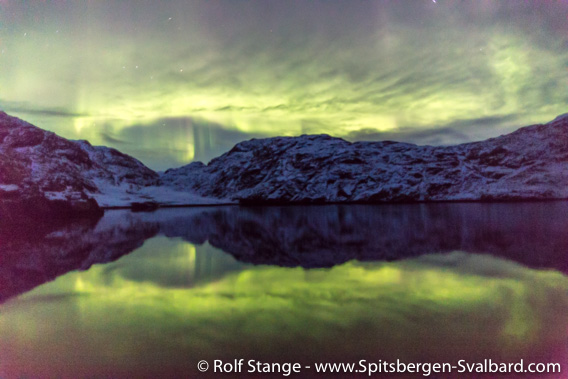
A few thin clouds may actually provide interesting views. Scoresbysund, East Greenland, mid September. 24 mm, 0.5 sec., f 1.4, ISO 12800. The camera was standing on a boat that was anchored. It was calm but still, a relatively fast shutter speed was crucial.
Strong sun activity is another requirement, because without sun activity no solar wind and without solar wind no polar light. There is a maximum of sun activity every 11 years, the last one was in 2013, so it will take a while again now to get to the next maximum phase of activity. That doesn’t mean that we won’t see anything meanwhile. Just a bit lower frequency and a bit less intensity. But that is statistics. Great things can happen anytime. At times of maximum activity, northern lights have actually been seen in central Europe and even the Mediterranean.
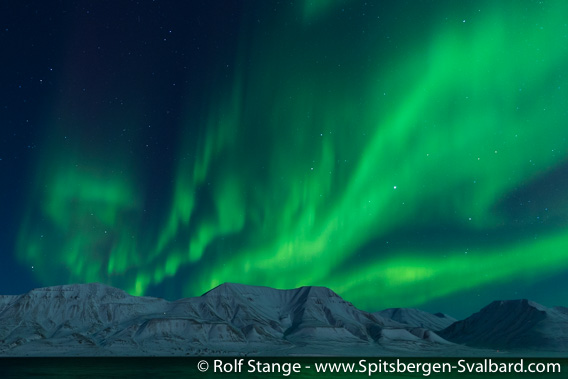
Strong northern light above Adventfjord at a time of pronounced sun activity, photographed near Longyearbyen. January 2014. 24 mm, 2.2 sec. exposure time, f 3.2, ISO 1600.
October or February are good seasons in Spitsbergen to see the aurora. There is no lack of darkness, but still some light or at least twilight during daytime for other activities. This is how season (especially October), so accommodation is cheaper than at other times. You should rent a car (rental cars are available in Longyearbyen) to get a bit away from the artificial light of the big city 🙂 well, it is big enough to cause disturbance during northern light observation and photography. No surprise the Kjell Hendriksen northern light observatory in Adventdalen near Longyearbyen has moved up a mountain some years ago – 500 m closer to the aurora! Well, that doesn’t really matter, but further away from light sources. The new observatory, at the end of the road above mine 7, is obviously a good place to be during aurora activity, but turn your lights off when you are getting closer, they want their darkness.
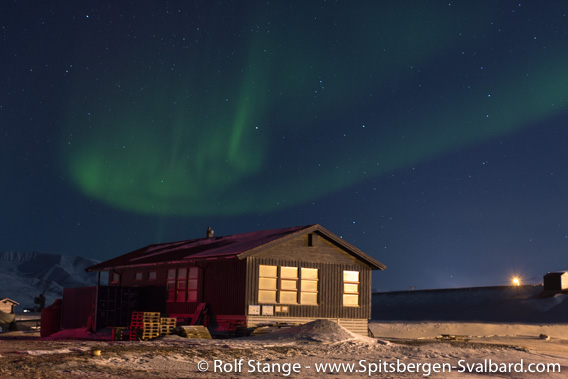
Northern light above Longyearbyen camping site. 50 mm, 3.2 sec., f 4.0, ISO 1600.
Campsite Longyearbyen in the polar night: 360 degree panorama
- pano anchor link: #Longyearbyen_07Jan14_180
To photograph the aurora, you should have a prime lens with big aperture. 24 mm or 50 mm with f 1.4 or even 1.2 are perfect. If you take the effort of travelling to the Arctic to see the northern light, then it is worth to bring good gear. You won’t get good aurora photos with a small pocket camera, let alone a smartphone. (You can rent good lenses; cheaper priced simpler versions of prime lenses are also often pretty good). And bring a tripod, that is essential. A good, low noise camera (full frame sensor) makes a big difference. Don’t use too long exposure times, as the aurora is moving. Too long exposures will result in blurred images. With a good full frame sensor, there is no reason to be afraid of ISO values of 1600 or 3200 or even higher if needed, to get the shutter speed down to 3.2 or 4 seconds and an aperture of 4 or so. You don’t want to have the aperture fully open, 1.2 comes at a price in terms of quality. Still, with good lens that has aperture 1.2, you will get better image quality at f 2.0 or 3.2 than with f 2.0 with a lens that does not go any further. Especially if you have something in the bottom of your frame, a hut, a tent, whatever. Which is usually much more atmospheric than “just” a northern light. A small, but well defined source of artificial light will also help you to focus. Turn the autofocus off, it won’t help you in these conditions. Focus manually.
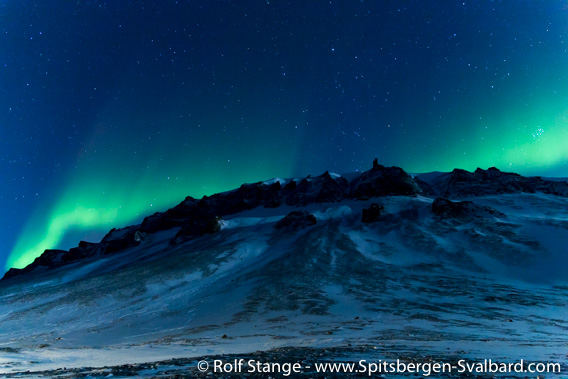
Polar night and polar light above Platåberg near Longyearbyen. The image appears brighter than reality. Early January evening, 6 sec., f 4.0, ISO 1600.
BOOKS, CALENDAR, POSTCARDS AND MORE
This and other publishing products of the Spitsbergen publishing house in the Spitsbergen-Shop.
last modification: 2019-02-26 ·
copyright: Rolf Stange
